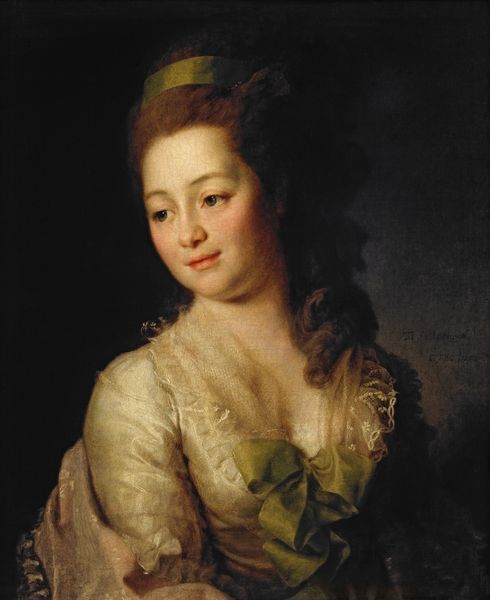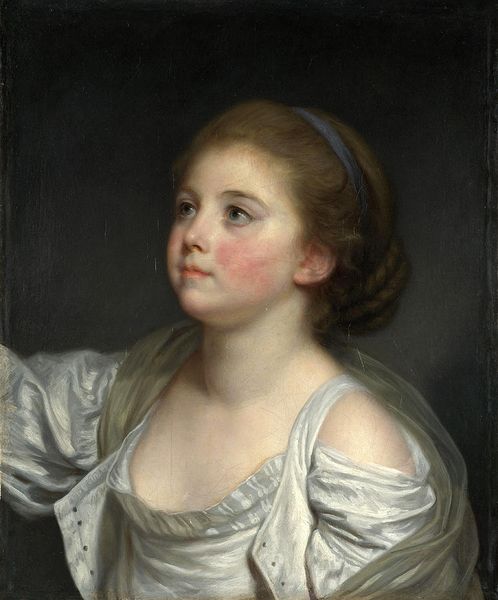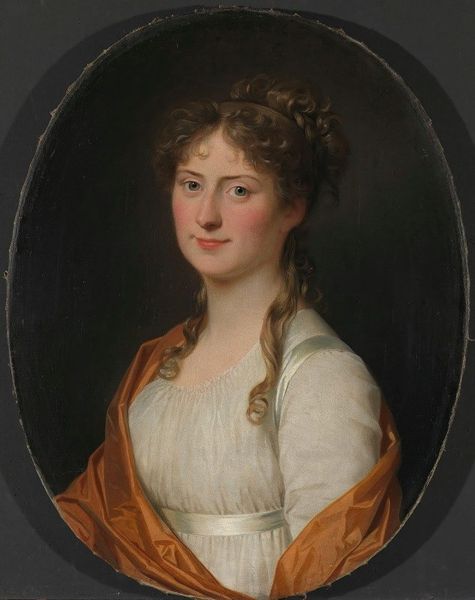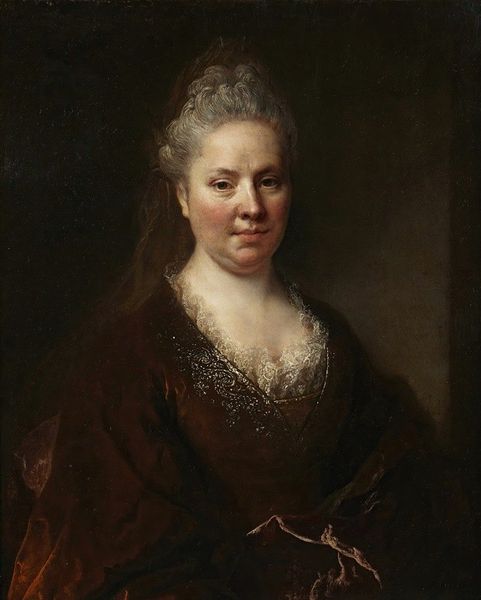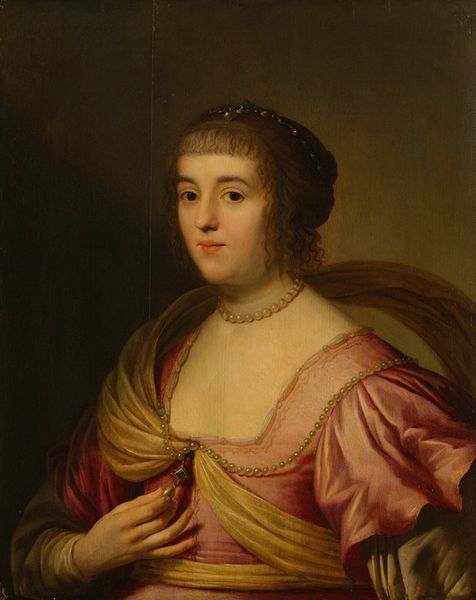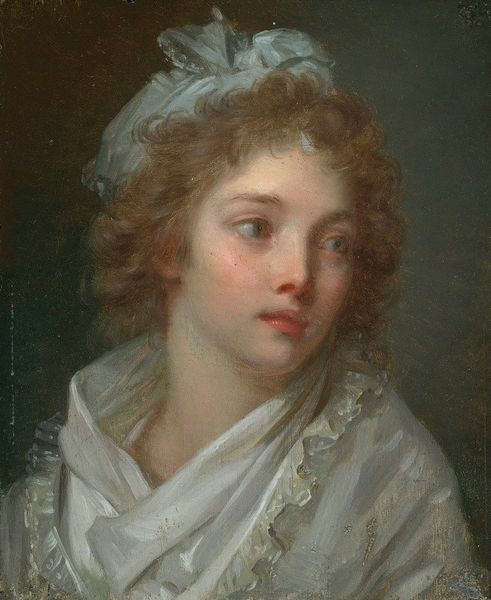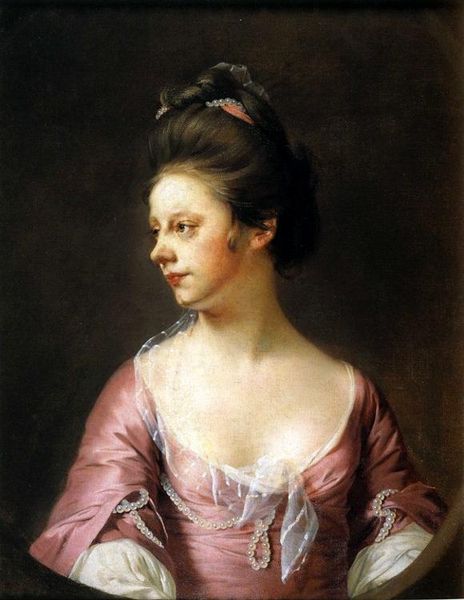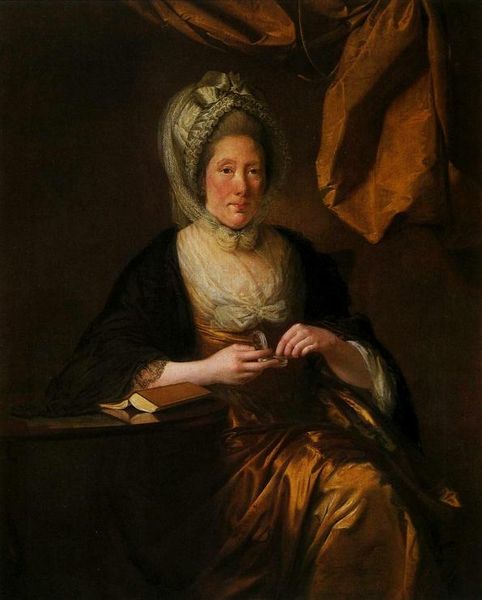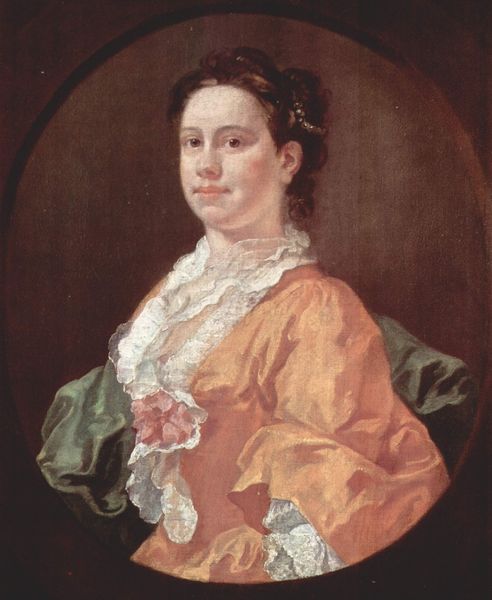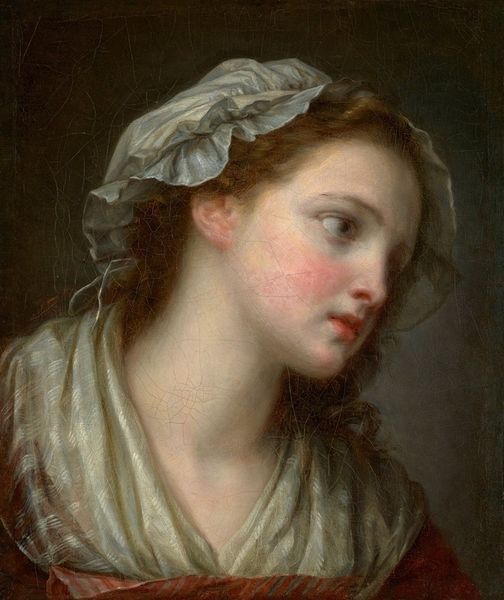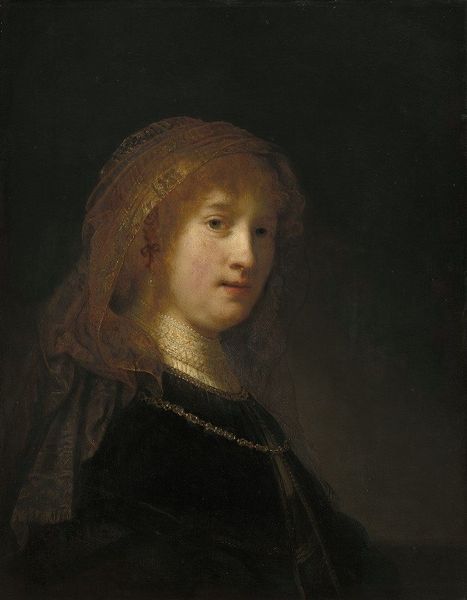
painting, oil-paint
#
portrait
#
figurative
#
portrait
#
painting
#
oil-paint
#
romanticism
#
history-painting
#
academic-art
#
realism
Copyright: Public Domain: Artvee
Curator: Elisabeth Louise Vigée Le Brun painted "Portrait of a Woman in a Turban" sometime between 1802 and 1805 using oil paints. A striking work! What catches your eye first? Editor: Immediately, it's the turban itself. The intertwining white, green, and darker bands create a sense of exoticism. It hints at travel, trade, perhaps even a veiled critique of cultural norms of the time. Curator: Precisely. The turban serves as more than just a head covering. During that era, there was growing fascination with the "Orient," often expressed through fashion and art. It invites discussions of colonialism, appropriation, and how different cultures interacted. Editor: I see the turban as a loaded image; there is an almost theatrical element to the depiction of the sitter, with an overt display of status but with that slightly averted, and melancholic gaze of someone constrained by her social positioning, which is accentuated by the choice of headwear. It echoes other artworks where turbans represented wisdom, but there is so much else happening here. Curator: The Romanticism of the early 19th century certainly influenced Vigée Le Brun. Beyond surface representation, what symbols or motifs do you discern that provide a window into this portrait? Editor: Consider her red wrap—a vibrant splash of color set against the darker background. Red, of course, traditionally signals power, passion. Yet here, draped so casually, it suggests a sort of studied nonchalance. It invites questions about the sitter's agency versus how she was perceived. Is it assertion, or performance? Curator: The portrait seems very staged, in her performance of this role. But you've highlighted a potent question. This portrait is less about historical accuracy and more about constructing a visual narrative. She navigates identity, status, and social expectations. Editor: Looking at "Portrait of a Woman in a Turban", I see not merely a rendering of likeness, but a discourse on power, perception, and representation in that period of early 19th-century European painting. Curator: And it serves as an important reminder that seemingly simple portraits are complex visual texts interwoven with history, societal forces, and personal expression. Thank you for sharing those thoughtful impressions!
Comments
No comments
Be the first to comment and join the conversation on the ultimate creative platform.
